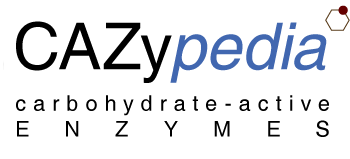CAZypedia is built on authoring and editing principles similar to those of other expert-based online encyclopedias (
cf. Citizendium, Scholarpedia). All
contributors to
CAZypedia, from the
Authors to the
Board of Curators, are experts in the field. Transparency is achieved through the use of contributors' real names and
published biographies in
CAZypedia. Individual entries in
CAZypedia are managed by
Responsible Curators, who are responsible for selecting expert
Authors and coordinating author contributions on individual pages. Selection of
Responsible Curators, based on their specialist expertise and ability to participate in the
active maintenance of entry content, is handled by the
Senior Curators.
More information on CAZypedia's content and editorial policies is available here. A short lecture and a set of slides presenting CAZypedia are freely available here. An article describing CAZypedia's genesis and evolution has been published in the journal Glycobiology.
